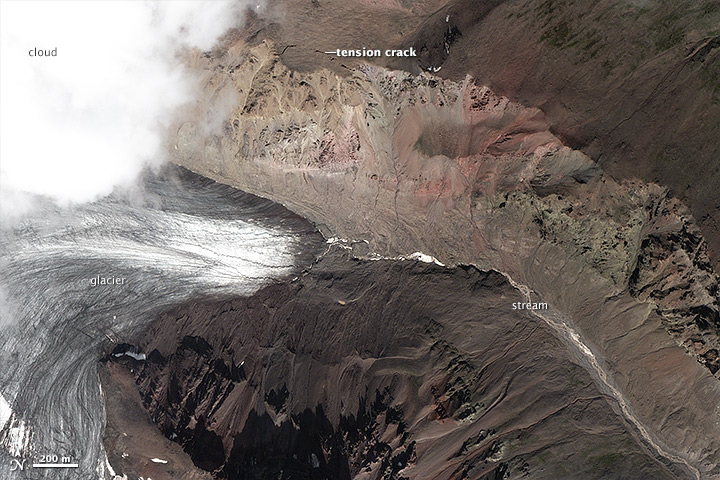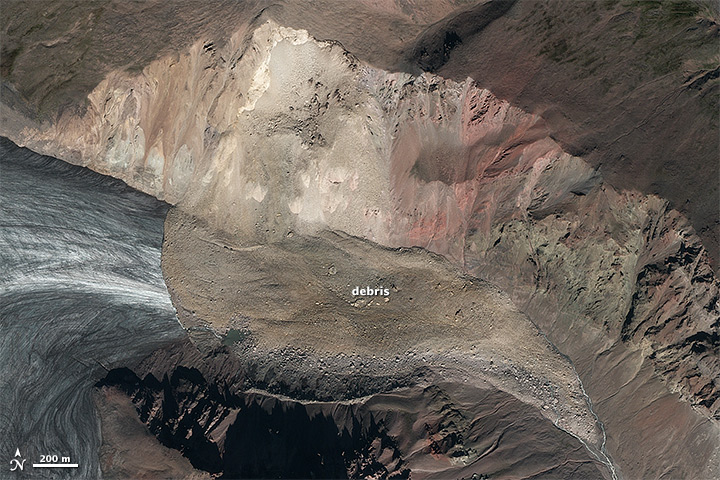31 August 2013
Another large rock avalanche in Alaska
Posted by Dave Petley
The NASA Earth Observation website has another example of a recent large rock avalanche in Alaska. Once again this event was detected by Colin Stark, Goran Ekstrom and Clément Hilbert of Columbia University using the global seismic network. This approach gives pretty good data on the size, duration and run-out distance of the landslide; the location of the event was then pinned down by NASA staff using Landsat 8 satellite imagery. The location is in in Wrangell-St. Elias National Park just east of Mount Jarvis.
The NASA site provides images of the landslide a few hours before failure and a few days after. This is the pre-failure image, which was collected by the French Pleiades satellite sensor:
..
Note the tension cracks, which have been highlighted on the image, showing active deformation. The location of the landslide just above the snout of the glacier is interesting – I wonder if this is a coincidence.
The post-event image shows the landslide very clearly:
..
The landslide has clearly detached as defined by the pre-failure tension cracks and then descended straight almost across the valley. There is some evidence of super-elevation on the opposite valley wall, and the landslide seems to have preferentially deposited larger boulders in this area. The flow has then turned 90 degrees to flow down the valley. The shape of the glacier snout is still visible beneath the debris, suggesting that the landslide ran over the ice rather then entraining it. The runout distance is not particularly great for a landslide of this size (the estimated volume is about 20 million tonnes). The valley is now blocked by the debris, suggesting that a lake will develop (there is already a small pond).
The landslide source area appears to have an interesting morphology, with a large bowl-shaped scarp in the upper slope, and a more linear shape lower down. This is not unusual for rock avalanches. On eastern side of the scarp there appears to be another tension crack, which may the start of the next failure. The NASA article considers the likely trigger of the landslide, with Colin Stark suggesting melting permafrost as being a potential factor. This is indeed the case, but it is worth noting that the progressive failure mechanism, which is commonly important in non-seismic rock avalanches, does mean that no triggering mechanism is required.




 Dave Petley is the Vice-Chancellor of the University of Hull in the United Kingdom. His blog provides commentary and analysis of landslide events occurring worldwide, including the landslides themselves, latest research, and conferences and meetings.
Dave Petley is the Vice-Chancellor of the University of Hull in the United Kingdom. His blog provides commentary and analysis of landslide events occurring worldwide, including the landslides themselves, latest research, and conferences and meetings.